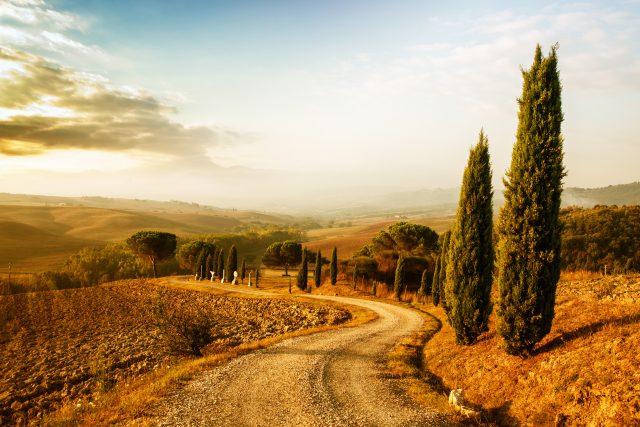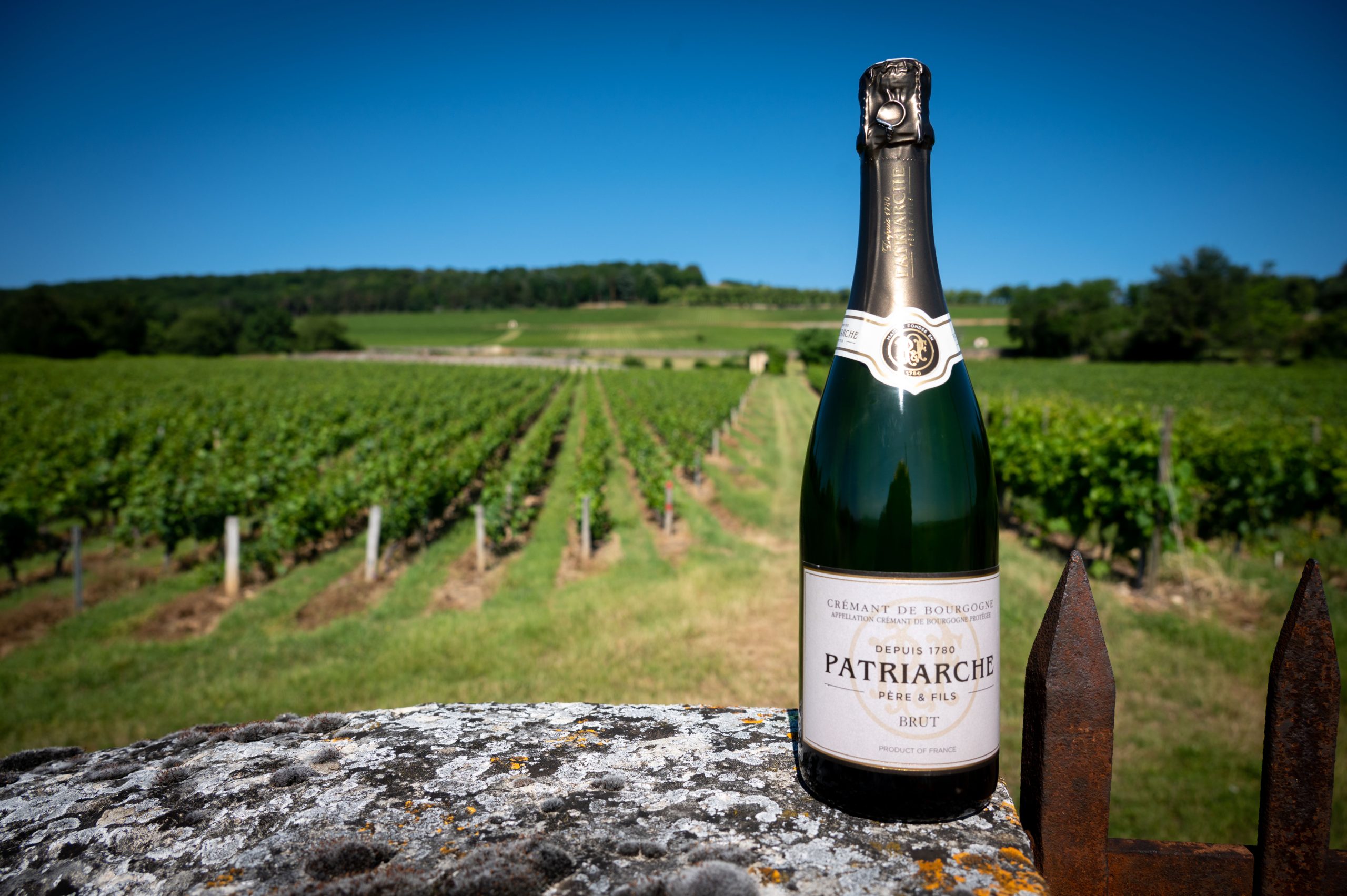How the cult of Super Tuscans is evolving
Is it time to change the way we think and talk about the wine category formerly known as Super Tuscans? Kathleen Willcox investigates.

“Personally, I love Super Tuscans,” says Marika Vida-Arnold, national fine wine brand ambassador for distributor Frederick Wildman & Sons.
“I’m very old-school in my approach. I personally favor the icons and originators featuring international varieties, like Sassicaia. Super Tuscans single-handedly created a category and transformed the way people think about Italian wine and what’s possible there and no one can change that. But the term feels really awkward now. Calling anything Super implies ‘better,’ and as a culture, I think we’re moving past that.”
While Vida-Arnold and other experts are hardly ready to cancel Super Tuscans for braggadocious behavior (if you’ve got it, flaunt it), many argue that perhaps it is time for a rethink of the category as a whole.
“Creating the category was essential at the time, because it solved a huge problem in the Italian wine industry at the time,” Vida-Arnold says. “But it’s important to move with the times in the wine industry. The situation that created the need for Super Tuscans in the first place no longer exists, and I think as an industry it’s time for us to focus more on the region these wines are made, instead of the term ‘Super Tuscan.’”
Creation Story
Super Tuscan wines embody a very specific type of rebellion, one that is rooted in a disdain for silly rules, but flowered into an aesthetic movement that represents so much more than the sum of its parts.
Like the Grateful Dead, hot yoga or hedge fund management, folks involved in the business of making Super Tuscans, or those who follow and benefit from said business, are in some ways as enamoured with the lifestyle that it symbolises, as much as they are with the product itself.
But the space is evolving, and so is the market.
Italy’s DOC system, like the French AOC system it is based on, is notoriously rigorous, with strict rules around viticulture and production. In Chianti in the 1960s, the DOC and DOCG regulations stipulated that indigenous white grapes like Trebbiano had to blended into red blends, and it forbade 100% Sangiovese blends and the use of international varietals like Cabernet Sauvignon and Merlot, which were rising in popularity.
By the late 1960s and early 1970s, a rebellion was underway. Key rule-blasting iconoclast wineries included Saissicaia, Isole e Olena, Ornellaia and Tignanello.
Some winemakers were eager to capitalise on the popularity of Bordeaux grapes, grown in Chianti’s diverse tapestry of terroirs, sometimes—but not always—with Sangiovese in the mix. Other winemakers wanted to explore Sangiovese’s untapped potential, with 100% single varietal bottlings crafted from meticulously farmed, fermented and aged grapes.
These renegade winemakers also flouted DOC / DOCG regulations regarding aging vessels.
“Super Tuscans were created because producers wanted to make a great wine and couldn’t do it under Chianti Classico regulations,” says Francesco Ricasoli, owner and CEO of Barone Ricasoli in Chianti.
The insurgent vintners made blends and 100% Sangiovese aged in French-style barriques were forced to release their wines under the inauspicious designation “Vino da Tavola,” or table wine. It’s unclear who gifted these wines with the heroic, elevating moniker “Super Tuscans,” though wine scribe Burt Anderson is the most likely candidate. By the early 1980s, the nickname had gained widespread currency, managing to evoke ultra-luxury and insidery rizz.
“Super Tuscans had a great impact in the U.S. and other international markets in the 1970s,” says Massimo Piccin, founder of Bolgheri’s Podere Sapaio. “The Super Tuscans made with international grapes often appeal to the U.S. market especially thanks to their familiarity with Bordeaux-style blends. American wine lovers usually appreciate them for their elegance, balance and full body.”
By 1992, even the Italian government had to agree that these winemakers in Chianti Classica DOC, but also Bolgheri / Bolgheri Sassicaia DOC and Maremma Toscana DOC were onto something. While the term “Super Tuscan” itself holds no legal meaning, and doesn’t appear on labels, Italy introduced a new stamp of quality that year to encompass the category.
The Indicazione Geografica Tipica (IGT) mark, which is analogous to France’s Vin de Pays, allows vintners to do their thing, as long as the grapes are sourced from Tuscany. On labels today, wine lovers find the region (Toscana) displayed above the IGT classification, along with the winery, and as became typical for Super Tuscans, a special wine name like Isole e Olena’s Cepparello.
“Now, of course, the regulations have changed, and winemakers can create Super Tuscans that don’t have to be labeled table wine,” Ricasoli notes.
Climactic conditions
Indeed, once regulations loosened up and allowed vintners to create blends with international stars, and release 100% Sangiovese, and the spirit of active rebellion among vintners and wine lovers alike diminished, some of the shine of the designation itself wore off.
“The term ‘Super Tuscan’ no longer feels as relevant, and is somewhat out of fashion,” Ricasoli says. “It still holds some sway as a brand name, but people toss it around without knowing what it means. It’s like saying ‘Ferrari.’ Maybe a man is trying to show off to his girlfriend, so he tells the sommelier that they want a ‘Super Tuscan’ without even knowing what it means.”
The power of shifting market perceptions, and the (in)ability to snag oenophiles with a canny marketing hook shouldn’t be underestimated.
“The term is obsolete in pretty much all ways,” says Sarah Trubnick, wine director of San Francisco’s The Barrel Room and founder of American Wine Collective. “The style isn’t defined like it once was, the other appellations have changed their rules, and everyone is veering toward leaner wines.”
Partner Content
But the Super Tuscan space is evolving on the ground too, thanks to ever more refined viticulture techniques and that old hag, climate change.
“When [fourth-generation] Paolo [De Marchi] arrived at Isole e Olena, he knew Sangiovese had great potential, even though the region at that point was known for lower-quality wines,” says Emanuele Reolon, the new estate director at Isole e Olena. “He applied the same techniques he learned in Piedmont, and began focusing on single vineyards, lowering yields and perfecting the vinification and aging techniques.”
What De Marchi was doing mirrored what other Super Tuscan producers were doing across the region.
“He transformed the farming,” Reolon says. “He started vinifying the vines that he determined were producing the highest quality grapes separately from the others, and finally released the first Cepparello 1980.”
Climate change has also played a part in transforming Sangiovese’s profile and characteristics.
“Obviously climate change is not a good thing, but the warmer conditions have allowed Sangiovese to reach new heights of maturation and flavor,” Reolon explains. “Back it the 1980s, it was difficult to produce a Sangiovese with 12.5% ABV. Today, we can reach 14%, and we still are able to maintain extremely high acidity levels with good minerality, tension and tannins.”
Compare the 100% Sangioveses today to those of 40 years ago, and the ones being produced today are “far and away better,” Reolon says.
International varieties are faring less well in certain pockets of Tuscany, he adds.
“Cabernet Sauvignon and some of the other international varietals are doing less well in the intense summer heat,” Reolon says. “They are reaching levels of 16.5% ABV, and are a lot less balanced. In a short time we will be replanting between two and four hectares of Cabernet Sauvignon and Syrah with Sangiovese.”
But he is also quick to say that for others in the area, international varieties are still performing well.
“Every winery has their own perspective, microclimate and soils,” Reolon says. “There are estates 15 kilometers from here using all international varieties, and zero Sangiovese.”
Future of Super Tuscans
With the perception and style of Super Tuscans somewhat in flux, what’s next? And will the sky-high prices for international Super Tuscans, and the ever-escalating prices for Sangiovese Super Tuscans continue apace?
“The Sangiovese wines are likely more interesting to consumers than the Bordeaux style blends, which are found everywhere at this point,” says Trubnick. “However, with Chianti Classico DOCG, among others allowing 100% Sangiovese now, there’s little to distinguish a 100% Sangiovese Super Tuscan from a Chianti.”
Ricosoli, for one, sees a bright future for both already established Super Tuscan labels and Sangiovese.
“While I don’t see the same power in the label Super Tuscan today, the successful premium labels focused on international varietals are names that have become known everywhere like Masseto, Ornellaia, San Felice and Tignanello,” Ricasoli says. “But in the past 20 years, there has been such an enormous improvement with Sangiovese, better clones, better vinifications, I think the future is with Sangiovese. You might even call them Super Chianti Classicos.”
Interest in Sangiovese does appear to be surging.
“Showing the range of Sangiovese is now possible in a different way, especially as wine critics, sommeliers and collectors are increasingly gravitating toward this style,” Ricasoli notes.
Reolon and Ricasoli admit that prices have risen considerably in recent years, and will likely continue to.
“We regularly see our wines on lists at restaurants at prices that would have been unimaginable even a few years ago,” Ricasoli says.
If Instagram’s algorithm is any indication, Sangiovese is having a moment. There are currently 509,000+ posts tagged “Sangiovese” on the platform, while “Supertuscan” only has around 117,000. But regions are where the real action is: “Chianti” snagged 1 million tags. “Tuscany” and “Bolgheri” grabbed 11.8 million and 239k, respectively.
“Indigenous grapes are trending all over the world,” Vida-Arnold says. “And consumers are more and more aware of where their wines are coming from. Instead of lumping these wines into a broad category, we need to be talking about where the wines are made, and what makes them unique.”
Related news
First Super Tuscans of autumn release hit La Place




